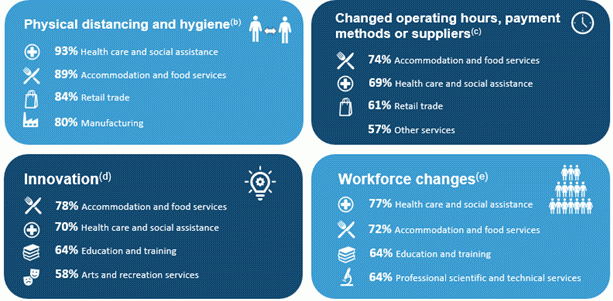This publication provides information on the incidence and nature of impacts due to COVID-19, as experienced by businesses operating in Australia.
Topics covered in this release include:
- Modifications to business operations;
- Subjects and sources of external advice sought by business;
- Changes in business revenue compared to same time last year;
- Length of time business operations could be supported by available cash on hand.
The collection was conducted through a telephone survey between 10 June and 17 June 2020, with a sample size of 2,000 businesses. The final response rate was 72% (1,431 responding businesses).
This release forms part of the suite of additional products that the ABS is producing to measure the impact of COVID-19. Future information collected in this survey will evolve to maintain relevance in a changing environment.






